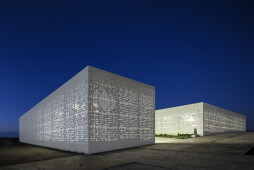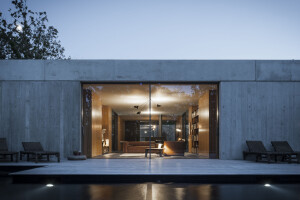WE THINK GREEN
Head Office of Tagusgás – first office building with BREEAM certification
The building of Tagusgás Head Office, constructed in the Business Park of Cartaxo, is one of the most innovative buildings in Portugal because of its bold architecture based on sustainability features, being the first office building certified by BREEAM in Portugal.
BREEAM (Building Research Establishment Environmental Assessment Method) is a system that evaluates the sustainability in construction, being the most widely used in environmental certification of buildings, with approximately 200,000 buildings classified around the world and over a million registered for evaluation since it has been introduced in 1990.
The project was developed by S+A in partnership with Ecochoice, which developed a set of sustainability measures to guarantee the cost reduction of activities, the building's environmental management, the comfort of the users and the certification by BREEAM system.
Sustainability measures were applied in the materials, energy efficiency, water saving, reduction of soil and air pollution, accessibility and mobility, as well as health and comfort.We highlight the energy reduction associated with comfort in interior due to the natural lighting and thermal and acoustic insulation the façade system provides.The natural ventilation enables to obtain even higher comfort and quality of the interior air.
The building had an on-site environmental monitoring to reduce environmental impact during the construction phase, ensuring the waste management and control of water consumption, energy and atmospheric emissions associated with the transport of materials.
The building has a User Guide, where the building’s sustainability measures are explained and all maintenance instructions are available, as well as the information necessary to the proper functioning of the building.










































